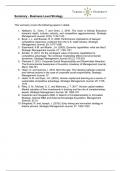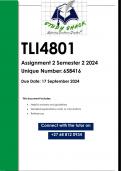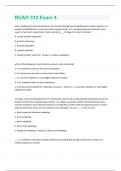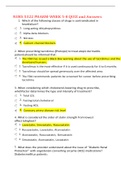Resume
Complete Course Summary - Business Level Strategy (2023)
- Cours
- Établissement
This summary covers all the obligated journal articles, lecture material and contains additional notes for the course Business Level Strategy for the Master Strategic Management. My exam result: 8,6 / 10
[Montrer plus]







